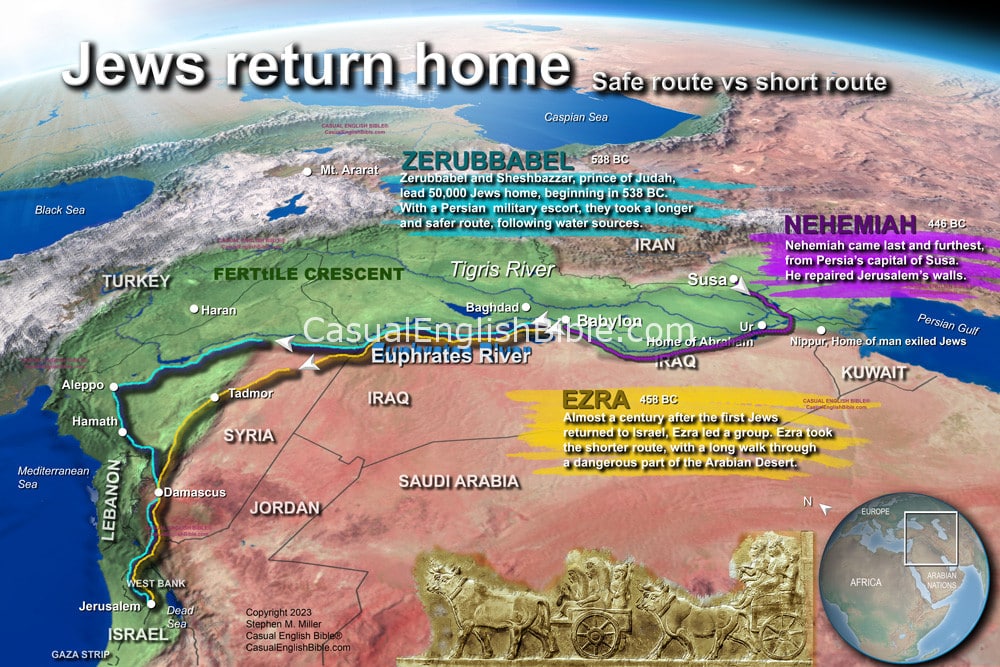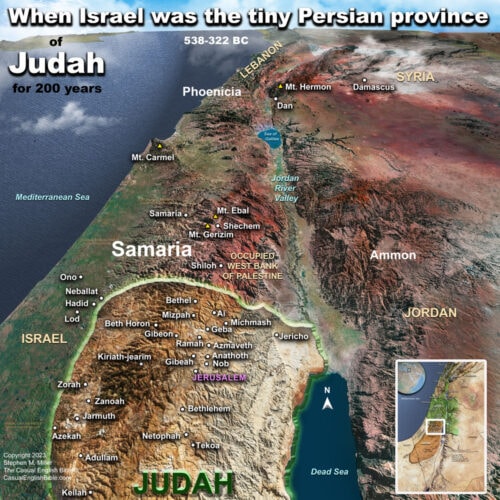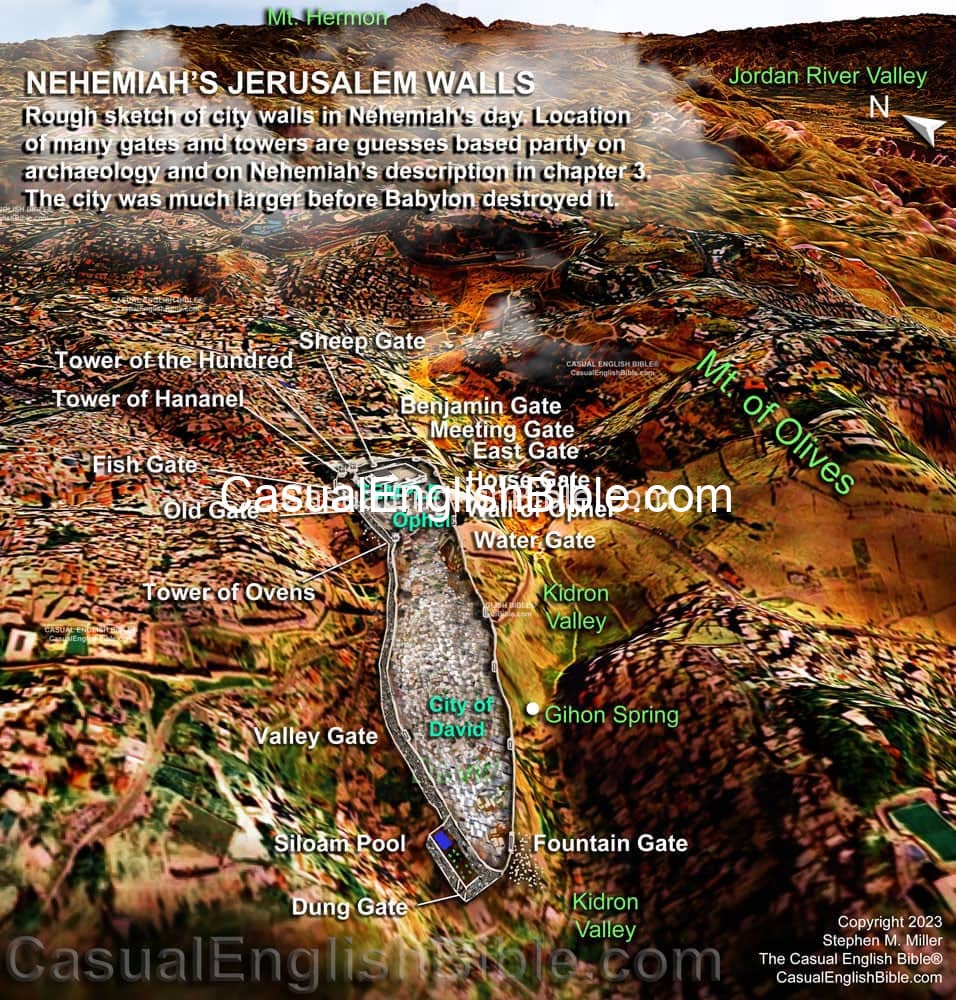Nehemiah 2
Nehemiah’s night ride around Jerusalem
King asks why Nehemiah is sad
1About four months later, early in the spring, [1] I served the king wine. That was the first time I ever let him see me looking sad while serving him. 2The king looked at me and said, “Why the sad face? You don’t seem sick. Something’s bothering you.” For a moment I panicked; I was terrified.3I said, “May you live forever, Your Majesty. I can’t help being sad. I got news that the city where my ancestors are buried lies in ruins, with the gates burned away.”
4The king said, “What would you like me to do?” I said a quick prayer to the God of heaven.
Nehemiah asks for leave of absence
5Then I told the king, “If you would agree to it and if you trust me this much, I would like you to send me to Judah. I want to rebuild the city where my ancestors are buried.”6With the queen sitting beside him, the king asked, “How long would you be gone and when could you be back?” We settled on a timeline, and he agreed to send me.
7I told the king, “If you think it’s a good idea, would you please give me letters for the governors in the province west of the Euphrates River. Direct them to give me safe passage to Judah. 8I would also appreciate a letter to Asaph, the official in charge of your forest. [2] I would like you to direct him to give me lumber for the gates I need to build near the Temple along with lumber for repairing the city wall and for building the house where I’ll live.” The king agreed to everything I asked, thanks to the kindness of God.
Non-Jews get testy
9I presented the king's letters to governors of the province West of the River. The king sent me with an escort of soldiers and cavalry. 10Some officials hated the news that people had come to help the Israelites. They included Sanballet the Horonite [3] and Tobiah the Ammonite. [4]Nehemiah inspects Jerusalem’s busted walls
11I went to Jerusalem and spent three days there. 12I got up late one night, assembled a few men, and went for a ride on my donkey. I didn’t explain what I was doing. 13In the dark, I rode by Valley Gate, [5] past Dragon Spring, and all the way to Dung Gate. Along the way I inspected the city’s defensive walls. They were broken down in places. And the gates into the city were gone, destroyed in fires.14I went on to Fountain Gate and then King’s Pool. But I couldn’t go further. There was no path for the donkey. 15So, I went over to the valley [6] and inspected the wall from there. Then I doubled back and went into the city through the Valley Gate.
16I hadn’t told anyone what I was doing here in Jerusalem—none of the Jews. Not the priests, nobles, officials, or the people who would do the repair work.
Nehemiah recruits workers
17When it came time to tell the people what I was doing, I said, “You can see the danger we’re in, can’t you? Jerusalem is a rockpile of ruins and the city gates are gone, destroyed by fire. This is disgraceful. Let’s restore our dignity and rebuild the walls.”18I told them about how God’s kindness brought me here. And I reported what the king said about our problem. They said, “We’re in! Let’s get to work!” They agreed to do this because it benefited all of them.
19Sanballat the Horonite was not happy. Neither was Tobiah the Ammonite or Geshem the Arab. They laughed at us and then accused us. They said, “What do you people think you’re doing? Do you think you can get away with insurrection against the king?”
20I told them, “God of heaven is with us. He’ll see to it that we finish the construction we’re about to start. You have no say in what happens here. Jerusalem is none of your business.”
Footnotes
The original Hebrew language says this took place in the Jewish month of Nisan, the first month on the Jewish calendar. It was still in the 20th year of King Artaxerxes’ reign—about 446 BC. Nisan places this scene somewhere between mid-March to mid-April. This raises the question of what Nehemiah was doing during those four months after his brother told him about Jerusalem (1:3). Did he take a leave of absence? Or, more likely, did he put on his game face and pretend everything was okay—until he was ready to ask the king for help?
Nehemiah doesn’t say which forest. One guess is the cedars of Lebanon. That’s where King Solomon and King Herod the Great got lumber for the temples and palaces they built. Lumbermen tied the logs into rafts and floated them down the coastline and then carried them to Jerusalem. Some scholars say that since Asaph was a Jewish name (famous as a Psalm songwriter), the woods may have been in Judah or along the coast.
An ancient document from the city of Elephantine in Egypt mentions Sanballat the Horonite as governor of Samaria, just north of Judah. The document puts Sanballat in that job as an old man with his sons helping him in about 408 BC. So, he may not have been governor almost 40 years earlier. “Horonite” takes some guessing. One of the most common is that Sanballat lived in the town of Beth-Horon, near Jerusalem, on an important road to the Mediterranean coast.
Ammonites had been perpetual enemies of the Jewish people since the time they returned from slavery in Egypt and began resettling in what was then called Canaan, today’s Israel and Palestinian Territories (Judges 3:13; 10:8).
Of the city gates Nehemiah mentions in his memoir, Valley Gate is the only one linked to archaeological discoveries. Ruins of the gate were found in 1924. It was located on the western side of the city.
Of the city gates Nehemiah mentions in his memoir, Valley Gate is the only one linked to archaeological discoveries. Ruins of the gate were found in 1924. It was located on the western side of the city.
Discussion Questions
- Sorry, there are currently no questions for this chapter.








